Death by a Thousand Sips… and Cuts

Some common uses of PFAS in consumer products include water and stain resistant coatings, non-stick cookware and food packaging materials. One concern associated with PFAS is their persistence in the environment and potential adverse effects on human health[i].
Research has linked exposure to certain PFAS to various health issues, including potential effects on the liver[ii], immune system[iii], and endocrine system[iv].
PFAS in Microplastics[v] & Nano-plastics[vi]: Microplastics are tiny plastic particles measuring less than 5 millimeters in size and Nano-plastics are less than 1000 nanometers. They can originate from the breakdown of larger plastic items or be intentionally manufactured at a microscopic scale. PFAS may be used in the production or processing of plastics, leading to the potential incorporation of these substances into the plastic matrix. They may leach into the environment from items that contained water or stain resistant coatings and from runoff and disposal.
Consumer products treated with PFAS, such as those with water-or-stain-resistant coatings, can release PFAS into the environment when the products degrade. This can contribute to PFAS contamination associated with microplastics.
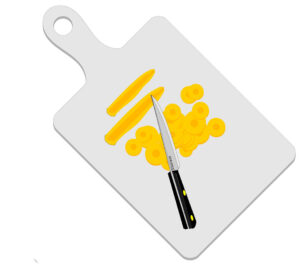 Cutting Boards: Plastic chopping boards pose a significant concern as a source of microplastics in the human food chain, warranting careful attention. It’s no surprise to anyone familiar with plastic cutting boards, that they are marked with the proud scars of culinary endeavors. Yet, these seemingly innocuous indentations harbor a hidden danger, housing tens of millions of microplastic particles[vii].
Cutting Boards: Plastic chopping boards pose a significant concern as a source of microplastics in the human food chain, warranting careful attention. It’s no surprise to anyone familiar with plastic cutting boards, that they are marked with the proud scars of culinary endeavors. Yet, these seemingly innocuous indentations harbor a hidden danger, housing tens of millions of microplastic particles[vii].
Peer-reviewed studies have shed light on the issue, revealing that chopping food, on certain plastic boards—specifically polyethylene and polypropylene—can release microplastic contaminants into the food we consume. A 2022 research investigation uncovered the release of microplastics into meat during chopping on these boards[viii], while another study identified microplastics on fish, chicken, and meat from markets utilizing plastic boards when packaging the product[ix].
Microplastics can pose a significant hazard. They are less than 5 millimeters in diameter can persist in the environment for hundreds or even thousands of years, contributing to pollution across various ecosystems, including clouds, air, water bodies, soil, and sand. Furthermore, microplastics infiltrate our bodies, contaminating our food supply and potentially posing health risks[x].
Drinking Straws of Death: Concerns about PFAS in eco-friendly products highlight the importance of transparency in product labeling and material sourcing. Consumers, as well as manufacturers, should be aware of potential sources of PFAS in their products and take steps to minimize or eliminate their use. In the quest to eliminate plastic pollution paper has been brought back. However, the paper of yesteryear versus todays is not the same. In a recent study it was found that even eco-friendly straws, where plant-based and other alleged eco-friendly straws have appeared. Almost all of the straw’s types were found to contain PFAS’s, and they were found to be more prevalent in plant-based products such as paper and bamboo straws[xi].
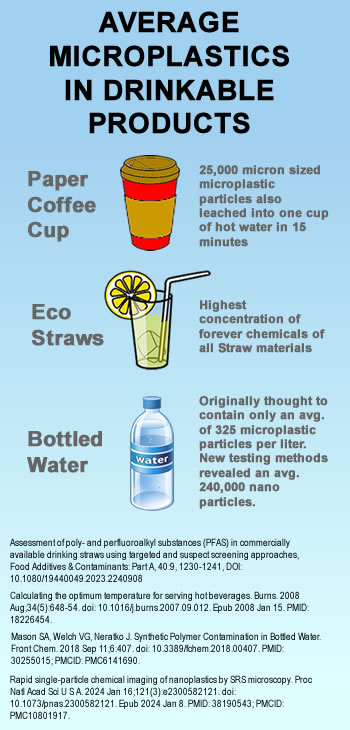 The Contaminate Paper Coffee Cup: Many paper cup interiors are laminated with a hydrophobic film made of mainly of plastic (polyethylene) and sometimes of copolymers. Studies have shown that when these types of paper cups are exposed to hot water, from 176 to 194 °F, fluoride, chloride, sulfate, and nitrate ions are released into the water. The average temperature of Coffee[xii] and Tea should range from 160 to 185 °F. 25,000 micron-sized microplastic particles also leached into one cup of hot water in 15 minutes[xiii]. The toxic heavy metals cadmium, chromium and lead were detected in the films, which could also leach into the hot water/beverage. The study concluded that “consuming our daily dose of hot beverages like tea and coffee can expose us to potential health risks in the future”. TIP: Alternately a lot of gas station/convenience stores with soda and coffee fountains will let you buy a refill. some place allows you to use your own cups. Tim Hortons is one example. However, it may vary from store to store.
The Contaminate Paper Coffee Cup: Many paper cup interiors are laminated with a hydrophobic film made of mainly of plastic (polyethylene) and sometimes of copolymers. Studies have shown that when these types of paper cups are exposed to hot water, from 176 to 194 °F, fluoride, chloride, sulfate, and nitrate ions are released into the water. The average temperature of Coffee[xii] and Tea should range from 160 to 185 °F. 25,000 micron-sized microplastic particles also leached into one cup of hot water in 15 minutes[xiii]. The toxic heavy metals cadmium, chromium and lead were detected in the films, which could also leach into the hot water/beverage. The study concluded that “consuming our daily dose of hot beverages like tea and coffee can expose us to potential health risks in the future”. TIP: Alternately a lot of gas station/convenience stores with soda and coffee fountains will let you buy a refill. some place allows you to use your own cups. Tim Hortons is one example. However, it may vary from store to store.
Bottled Water: Studies have shown that bottled water also contain PFAS[xiv]. Numerous studies have also uncovered the presence of microscopic plastic particles in various bottled water brands, indicating a pervasive concern that extends beyond tap water. A recent study has uncovered that bottled water might contain hundreds of thousands of previously unnoticed. The study utilized a new process that can look at molecules inside living cells. The total was 10 to 100 times more plastic particles than seen in earlier studies[xv] , as high as 240,000 particiels [xvi]. Originally studies only were tested on microplastics which have a range of 5 millimeter to 1 nanometer in size. Nanoplastics are under 0.001 millimeter (or 1 nanometer) in size. In one 2022 study a comprehensive analysis revealed the presence of 2,022 microplastics in the samples, averaging 50.6 particles per bottle (500-mL packaging). Beads, fibers, fragments, and films were identified in all the samples. Notably, fibers (48%) and fragments (36%) constituted the majority, accounting for 84% of the total microplastics found in the samples. In 2022, a comprehensive analysis revealed the presence of 2,022 microplastics in the samples, averaging 50.6 particles per bottle (500-mL packaging). Beads, fibers, fragments, and films were identified in all the samples. Notably, fibers (48%) and fragments (36%) constituted the majority, accounting for 84% of the total microplastics found in the samples[xvii].
The study revealed that, on average, one liter of bottled water contained approximately 240,000 small plastic particles, which are particles below 1 micrometer. Notably, around 90% of these plastic fragments were identified as nanoplastics. The range of microplastic contamination varied from 0 to over 10,000 particles per liter, with 90% of the particles falling within the size range of 6.5 to 100 micrometers[xviii]. The brands that were tested and found to have nanoparticles in them are Evian, Fiji, Voss, SmartWater, Aquafina, Dasani[xix], and the brands that were tested that were found to have microplastics in them are Aqua, Aquafina, Dasani, Evian, Nestle Pure Life and San Pellegrino, Bisleri, Epura, Gerolsteiner, Minalba and Wahaha[xx].
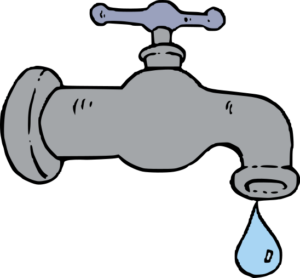 Tap and Well Water: Another study found microplastics were present in all water samples, with their average abundance varying from 1473 ± 34 to 3605 ± 497 particles per liter (L-1) in raw water (such as tap water) and from 338 ± 76 to 628 ± 28 particles L-1 in treated water. The specific abundance levels depended on the Water Treatment Plant (WTP) under consideration[xxi].
Tap and Well Water: Another study found microplastics were present in all water samples, with their average abundance varying from 1473 ± 34 to 3605 ± 497 particles per liter (L-1) in raw water (such as tap water) and from 338 ± 76 to 628 ± 28 particles L-1 in treated water. The specific abundance levels depended on the Water Treatment Plant (WTP) under consideration[xxi].
 Toilet Paper: PFAS in toilet paper suggests a previously underestimated avenue for human exposure to these chemicals[xxii]. Researchers found detectable levels of PFAS in certain brands of toilet paper, indicating that these substances may be present in the recycled materials used in the manufacturing process. The other concern lies in the potential transfer of PFAS from toilet paper to the skin during use, as well as the environmental impact when these products are flushed and enter wastewater systems[xxiii]. Charmin Ultra Soft Toilet Paper, Seventh Generation 100% Recycled Bath Tissue, Tushy Bamboo Toilet Paper and Who Gives a Crap Bamboo Toilet Paper[xxiv].
Toilet Paper: PFAS in toilet paper suggests a previously underestimated avenue for human exposure to these chemicals[xxii]. Researchers found detectable levels of PFAS in certain brands of toilet paper, indicating that these substances may be present in the recycled materials used in the manufacturing process. The other concern lies in the potential transfer of PFAS from toilet paper to the skin during use, as well as the environmental impact when these products are flushed and enter wastewater systems[xxiii]. Charmin Ultra Soft Toilet Paper, Seventh Generation 100% Recycled Bath Tissue, Tushy Bamboo Toilet Paper and Who Gives a Crap Bamboo Toilet Paper[xxiv].
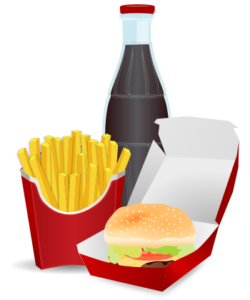 Fast Food Wrappings: The presence of PFAS in fast food wrappers is particularly worrisome due to the role that heat plays in the leaching process. When these wrappers come into contact with hot food items, the heat can facilitate the transfer of PFAS from the packaging to the food, potentially introducing these substances into the human body upon consumption. The use of PFAS in food packaging, coupled with the heat-induced leaching, underscores the need for heightened awareness regarding the potential health risks associated with these chemicals. Grease-proof PFAS coatings on 46% of food-contact papers (such as hamburger wrappers) and 20% of paperboard samples (such as French fry boxes) collected from fast food restaurants throughout the United States[xxv]. TIP: Further People who ate more food at home averaged lower blood serum concentrations of PFAS[xxvi].
Fast Food Wrappings: The presence of PFAS in fast food wrappers is particularly worrisome due to the role that heat plays in the leaching process. When these wrappers come into contact with hot food items, the heat can facilitate the transfer of PFAS from the packaging to the food, potentially introducing these substances into the human body upon consumption. The use of PFAS in food packaging, coupled with the heat-induced leaching, underscores the need for heightened awareness regarding the potential health risks associated with these chemicals. Grease-proof PFAS coatings on 46% of food-contact papers (such as hamburger wrappers) and 20% of paperboard samples (such as French fry boxes) collected from fast food restaurants throughout the United States[xxv]. TIP: Further People who ate more food at home averaged lower blood serum concentrations of PFAS[xxvi].
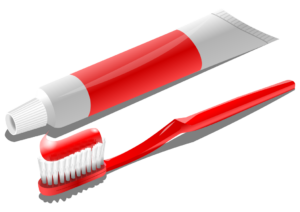 Toothpaste & Toothbrush: When toothbrushes are utilized for oral hygiene, there is a potential release of small plastic debris and fragments, either directly into the mouth or indirectly into the environment. The estimated daily release of microplastics from toothbrushes ranges in the thousands, subject to expected variations[xxvii]–[xxviii]. Some toothpaste formulations may include substances like triclosan or parabens, suspected endocrine disruptors that can be harmful to genetic material[xxix]–[xxx].
Toothpaste & Toothbrush: When toothbrushes are utilized for oral hygiene, there is a potential release of small plastic debris and fragments, either directly into the mouth or indirectly into the environment. The estimated daily release of microplastics from toothbrushes ranges in the thousands, subject to expected variations[xxvii]–[xxviii]. Some toothpaste formulations may include substances like triclosan or parabens, suspected endocrine disruptors that can be harmful to genetic material[xxix]–[xxx].
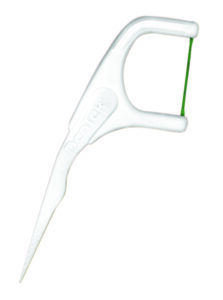 Dental Floss: is another product that may contain per- and polyfluoroalkyl substances (PFAS). However, it is crucial to note that not all floss products contain PFAS, necessitating careful selection of the brand. A study revealed evidence of PFAS in 13 out of 39 floss brands[xxxi], and further indicated a correlation between flossing and elevated PFAS levels in the body. Consequently, consumers need to exercise caution and make informed choices when selecting dental care products to minimize potential exposure to these concerning substances[xxxii].
Dental Floss: is another product that may contain per- and polyfluoroalkyl substances (PFAS). However, it is crucial to note that not all floss products contain PFAS, necessitating careful selection of the brand. A study revealed evidence of PFAS in 13 out of 39 floss brands[xxxi], and further indicated a correlation between flossing and elevated PFAS levels in the body. Consequently, consumers need to exercise caution and make informed choices when selecting dental care products to minimize potential exposure to these concerning substances[xxxii].
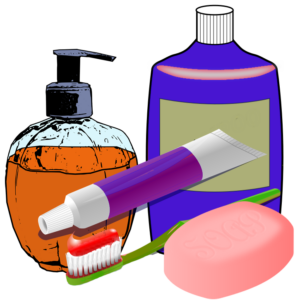 Soap and Body Care Products: These chemicals are incorporated into products to enhance their durability, water resistance, or smooth spreading. However, the inclusion of PFAS in certain items, such as soap and shampoo, poses potential risks, as these products are utilized in proximity to sensitive areas like the mouth and eyes. These mucous membranes readily absorb contaminants. In response to this concern, several brands of both soap and shampoo have started promoting themselves as PFAS-free, but are they? The bottled water study that used a new method for identifying microplastics clearly showed the problem is much larger them it originally appeared. This trend is gaining momentum, with an increasing number of products making such claims[xxxiii].
Soap and Body Care Products: These chemicals are incorporated into products to enhance their durability, water resistance, or smooth spreading. However, the inclusion of PFAS in certain items, such as soap and shampoo, poses potential risks, as these products are utilized in proximity to sensitive areas like the mouth and eyes. These mucous membranes readily absorb contaminants. In response to this concern, several brands of both soap and shampoo have started promoting themselves as PFAS-free, but are they? The bottled water study that used a new method for identifying microplastics clearly showed the problem is much larger them it originally appeared. This trend is gaining momentum, with an increasing number of products making such claims[xxxiii].
Citations
[i] https://www.nih.gov/news-events/nih-research-matters/study-links-synthetic-chemicals-liver-damage
[ii] Costello, E., Sarah, R., Nikos, S., Sandrah P., Walker, D., Valvi, D., Exposure to per- and Polyfluoroalkyl Substances and Markers of Liver Injury: A Systematic Review and Meta-Analysis, Environmental Health Perspectives, Volume 130, Issue 4, CID: 046001
[iii] Beans C. News Feature: How “forever chemicals” might impair the immune system. Proc Natl Acad Sci U S A. 2021 Apr 13;118(15):e2105018118. doi: 10.1073/pnas.2105018118. PMID: 33833063; PMCID: PMC8054019.
[iv] Mokra K. Endocrine Disruptor Potential of Short- and Long-Chain Perfluoroalkyl Substances (PFASs)-A Synthesis of Current Knowledge with Proposal of Molecular Mechanism. Int J Mol Sci. 2021 Feb 21;22(4):2148. doi: 10.3390/ijms22042148. PMID: 33670069; PMCID: PMC7926449.
[v] Scott JW, Gunderson KG, Green LA, Rediske RR, Steinman AD. Perfluoroalkylated Substances (PFAS) Associated with Microplastics in a Lake Environment. Toxics. 2021 May 11;9(5):106. doi: 10.3390/toxics9050106. PMID: 34064651; PMCID: PMC8151042.
[vi] Enyoh CE, Ovuoraye PE, Qingyue W, Wang W. Examining the impact of nanoplastics and PFAS exposure on immune functions through inhibition of secretory immunoglobin A in human breast milk. J Hazard Mater. 2023 Oct 5;459:132103. doi: 10.1016/j.jhazmat.2023.132103. Epub 2023 Jul 22. PMID: 37527590.
[vii] Yadav H, Khan MRH, Quadir M, Rusch KA, Mondal PP, Orr M, Xu EG, Iskander SM. Cutting Boards: An Overlooked Source of Microplastics in Human Food? Environ Sci Technol. 2023 Jun 6;57(22):8225-8235. doi: 10.1021/acs.est.3c00924. Epub 2023 May 23. PMID: 37220346.
[viii] Habib RZ, Poulose V, Alsaidi R, Al Kendi R, Iftikhar SH, Mourad AI, Kittaneh WF, Thiemann T. Plastic cutting boards as a source of microplastics in meat. Food Addit Contam Part A Chem Anal Control Expo Risk Assess. 2022 Mar;39(3):609-619. doi: 10.1080/19440049.2021.2017002. Epub 2022 Jan 27. PMID: 35084287.
[ix] Habib RZ, Kindi RA, Salem FA, Kittaneh WF, Poulose V, Iftikhar SH, Mourad AI, Thiemann T. Microplastic Contamination of Chicken Meat and Fish through Plastic Cutting Boards. Int J Environ Res Public Health. 2022 Oct 18;19(20):13442. doi: 10.3390/ijerph192013442. PMID: 36294029; PMCID: PMC9602623.
[x] Stapleton MJ, Hai FI. Microplastics as an emerging contaminant of concern to our environment: a brief overview of the sources and implications. Bioengineered. 2023 Dec;14(1):2244754. doi: 10.1080/21655979.2023.2244754. PMID: 37553794; PMCID: PMC10413915.
[xi] Pauline Boisacq, Maarten De Keuster, Els Prinsen, Yunsun Jeong, Lieven Bervoets, Marcel Eens, Adrian Covaci, Tim Willems & Thimo Groffen (2023) Assessment of poly- and perfluoroalkyl substances (PFAS) in commercially available drinking straws using targeted and suspect screening approaches, Food Additives & Contaminants: Part A, 40:9, 1230-1241, DOI: 10.1080/19440049.2023.2240908
[xii] Brown F, Diller KR. Calculating the optimum temperature for serving hot beverages. Burns. 2008 Aug;34(5):648-54. doi: 10.1016/j.burns.2007.09.012. Epub 2008 Jan 15. PMID: 18226454.
[xiii] Brown F, Diller KR. Calculating the optimum temperature for serving hot beverages. Burns. 2008 Aug;34(5):648-54. doi: 10.1016/j.burns.2007.09.012. Epub 2008 Jan 15. PMID: 18226454.
[xiv] Chow SJ, Ojeda N, Jacangelo JG, Schwab KJ. Detection of ultrashort-chain and other per- and polyfluoroalkyl substances (PFAS) in U.S. bottled water. Water Res. 2021 Aug 1;201:117292. doi: 10.1016/j.watres.2021.117292. Epub 2021 May 27. PMID: 34118648.
[xv] Qian N, Gao X, Lang X, Deng H, Bratu TM, Chen Q, Stapleton P, Yan B, Min W. Rapid single-particle chemical imaging of nanoplastics by SRS microscopy. Proc Natl Acad Sci U S A. 2024 Jan 16;121(3):e2300582121. doi: 10.1073/pnas.2300582121. Epub 2024 Jan 8. PMID: 38190543; PMCID: PMC10801917.
[xvi] https://www.nih.gov/news-events/nih-research-matters/plastic-particles-bottled-water
[xvii] Wong, Ngie Hing & Chai, C.S. & Bamgbade, J.A & Ma, G.F. & Hii, G.W.. (2021). Detection of Microplastics in Bottled Water. Materials Science Forum. 1030. 169-176. 10.4028.
[xviii] Mason SA, Welch VG, Neratko J. Synthetic Polymer Contamination in Bottled Water. Front Chem. 2018 Sep 11;6:407. doi: 10.3389/fchem.2018.00407. PMID: 30255015; PMCID: PMC6141690.
[xix] https://www.packaginginsights.com/news/us-study-reveals-high-levels-of-nanoplastics-in-bottled-water-prompting-health-concerns.html
[xx] https://phys.org/news/2018-03-bottled-brands-contaminated-plastic-particles.html
[xxi] Pivokonsky M, Cermakova L, Novotna K, Peer P, Cajthaml T, Janda V. Occurrence of microplastics in raw and treated drinking water. Sci Total Environ. 2018 Dec 1;643:1644-1651. doi: 10.1016/j.scitotenv.2018.08.102. Epub 2018 Aug 8. PMID: 30104017.
[xxii] https://time.com/6259819/pfas-found-in-toilet-paper/
[xxiii] Tolaymat T, Robey N, Krause M, Larson J, Weitz K, Parvathikar S, Phelps L, Linak W, Burden S, Speth T, Krug J. A critical review of perfluoroalkyl and polyfluoroalkyl substances (PFAS) landfill disposal in the United States. Sci Total Environ. 2023 Dec 20;905:167185. doi: 10.1016/j.scitotenv.2023.167185. Epub 2023 Sep 19. PMID: 37734620; PMCID: PMC10842600.
[xxiv] https://www.naturopathy-uk.com/news/blog/2023/01/13/is-your-toilet-paper-toxic/
[xxv] Schaider LA, Balan SA, Blum A, Andrews DQ, Strynar MJ, Dickinson ME, Lunderberg DM, Lang JR, Peaslee GF. Fluorinated Compounds in U.S. Fast Food Packaging. Environ Sci Technol Lett. 2017;4(3):105-111. doi: 10.1021/acs.estlett.6b00435. PMID: 30148183; PMCID: PMC6104644.
[xxvi] Seltenrich N. PFAS in Food Packaging: A Hot, Greasy Exposure. Environ Health Perspect. 2020 May;128(5):54002. doi: 10.1289/EHP6335. Epub 2020 May 28. PMID: 32463326; PMCID: PMC7255411.
[xxvii] Fang C, Gopalan S, Zhang X, Xu L, Niu J, Naidu R. Raman imaging to identify microplastics released from toothbrushes: algorithms and particle analysis. Environ Pollut. 2023 Nov 15;337:122510. doi: 10.1016/j.envpol.2023.122510. Epub 2023 Sep 7. PMID: 37689132.
[xxviii] https://www.acs.org/pressroom/tiny-matters/plastic-micro-plastic-everywhere-what-does-it-do-and-why-should-we-care.html
[xxix] Glüge J , Scheringer M , Cousins IT , DeWitt JC , Goldenman G , Herzke D , Lohmann R , Ng CA , Trier X , Wang Z . An overview of the uses of per- and polyfluoroalkyl substances (PFAS). Environ Sci Process Impacts. 2020 Dec 1;22(12):2345-2373. doi: 10.1039/d0em00291g. Epub 2020 Oct 30. PMID: 33125022; PMCID: PMC7784712.
[xxx] Madhumitha CT, Karmegam N, Biruntha M, et al.: Extraction, identification, and environmental risk assessment of microplastics in commercial toothpaste. Chemosphere. 2022 Jun;296:133976. Epub 2022 Feb 14. 10.1016/j.chemosphere.2022.133976
[xxxi] https://www.ehn.org/pfas-floss-2658203711.html
[xxxii] Boronow, Katherine & Brody, Julia & Schaider, Laurel & Peaslee, Graham & Havas, Laurie & Cohn, Barbara. (2019). Serum concentrations of PFASs and exposure-related behaviors in African American and non-Hispanic white women. Journal of exposure science & environmental epidemiology. 29. 206-217. 10.1038/s41370-018-0109-y.
[xxxiii] Glüge J , Scheringer M , Cousins IT , DeWitt JC , Goldenman G , Herzke D , Lohmann R , Ng CA , Trier X , Wang Z . An overview of the uses of per- and polyfluoroalkyl substances (PFAS). Environ Sci Process Impacts. 2020 Dec 1;22(12):2345-2373. doi: 10.1039/d0em00291g. Epub 2020 Oct 30. PMID: 33125022; PMCID: PMC7784712.

